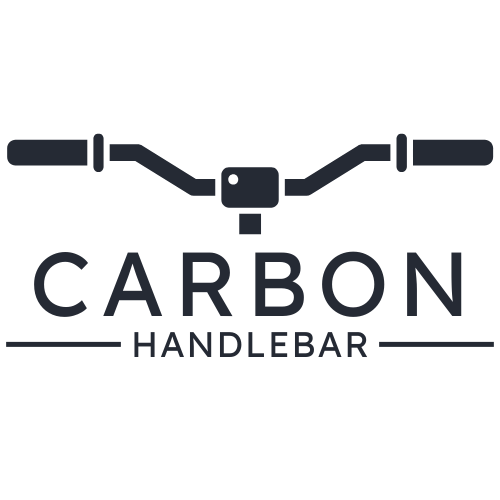Long-distance cycling can be an exhilarating yet physically demanding endeavor. As cyclists tackle miles of terrain, they seek every possible advantage to enhance comfort and performance. One significant upgrade that has gained traction in the cycling community is the use of carbon handlebars. These high-tech components offer several key benefits that can reduce fatigue and improve the overall riding experience.
1. Lightweight Design
One of the most apparent advantages of carbon handlebars is their lightweight nature. Compared to traditional materials like aluminum or steel, carbon fiber is considerably lighter, resulting in less weight that cyclists have to carry over long distances. A lighter bike enhances climbing performance, accelerates easier, and reduces overall energy expenditure. This can make a significant difference on lengthy rides where every ounce counts. For those looking to invest in new components, check out our best value carbon handlebars for recommendations.
2. Superior Vibration Dampening
One of the most significant contributors to cycling fatigue is the constant pulse of road vibrations transmitted through the bike frame and handlebars. Carbon has a unique ability to absorb these vibrations better than metal options, resulting in a more comfortable grip for cyclists’ arms and hands. This superior vibration dampening minimizes the impact on the upper body and helps decrease fatigue, allowing riders to maintain their endurance over longer durations without the discomfort often associated with metal handlebars. If you want to understand more about handlebar maintenance, refer to our maintenance tips for carbon handlebars.
3. Increased Stiffness
Carbon fiber can be engineered to achieve specific stiffness-to-weight ratios, providing an ideal balance of performance and comfort. The stiffness of carbon handlebars translates to better power transfer from the rider to the bike, improving efficiency during pedaling. However, carbon can also be designed to flex slightly under pressure, absorbing shock in performance-critical moments without sacrificing overall control. This combination of stiffness and comfort makes carbon handlebars an excellent choice for long-distance cyclists who need reliable performance without compromising their comfort. Explore our article on proper torque for carbon handlebars for safe installation guidance.
4. Improved Ergonomics
Many carbon handlebars are designed with ergonomics in mind, featuring shapes that promote better hand positioning. An ergonomic design encourages comfortable grips and proper wrist alignment, which is particularly important during long rides. The ability to change positions while riding—whether to take a break or to climb a steep hill—without discomfort makes a significant difference in a cyclist’s endurance and overall riding pleasure. For a hands-on guide, check our installation and grip adjustment techniques.
5. Enhanced Aesthetics
In addition to their performance benefits, carbon handlebars provide a sleek and modern aesthetic that appeals to many cyclists. The unmistakable appearance of carbon fiber gives bikes a high-tech, professional look that is both visually pleasing and a true reflection of the advanced materials used in construction. This attention to aesthetics can fortify a cyclist’s pride in their setup, adding an extra layer of satisfaction to their riding experience. If you’re interested in unique color options, see our colorful handlebar accessories.
6. Corrosion Resistance
Durability is crucial for any cycling component, and carbon handlebars excel in this regard. Unlike metal handlebars, which are prone to rust and corrosion over time, carbon offers inherent resistance to these issues. This durability means less maintenance for cyclists, allowing them to focus on their rides rather than worrying about the longevity of their components. For those who want to explore low-maintenance options, check out our creak prevention tips.
7. Customizability
Cyclists come in all shapes, sizes, and riding styles, which is why the availability of carbon handlebars in various shapes and sizes is a significant asset. Whether a rider prefers a wider handlebar for increased stability or a narrower design for agility, there’s likely a carbon option to meet those preferences. Customizability ensures that every cyclist can find the perfect fit for their unique needs, enhancing their comfort and performance in the saddle. Explore various styles in our shop.
8. Performance Gains
Ultimately, the properties of carbon fiber can lead to substantial performance gains, making it a popular choice for serious cyclists. With improved power transfer, reduced weight, and enhanced comfort, carbon handlebars contribute to better speed and efficiency during long rides. This performance edge is invaluable for cyclists aiming to push their limits and achieve personal bests in their long-distance endeavors. For more insight, check out our comparative analysis in carbon vs aluminum handlebars.
Carbon handlebars have revolutionized long-distance cycling by providing cyclists with a series of benefits that can significantly reduce fatigue and enhance overall riding comfort. From their lightweight construction to advanced vibration dampening, increased stiffness, ergonomic designs, aesthetic appeal, corrosion resistance, customizability, and performance gains, the advantages of carbon handlebars are compelling. As more cyclists seek ways to improve their rides, opting for carbon handlebars may be one of the best decisions they can make for their cycling experience. Whether you’re commuting, touring, or racing, embracing the benefits of carbon technology can transform your long-distance cycling adventures.
